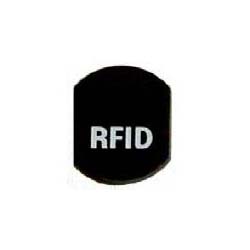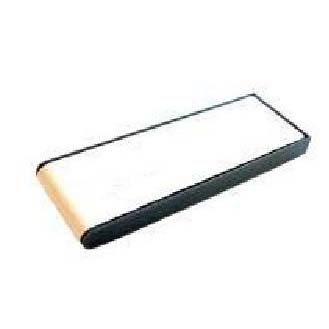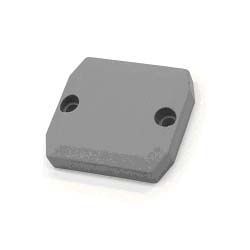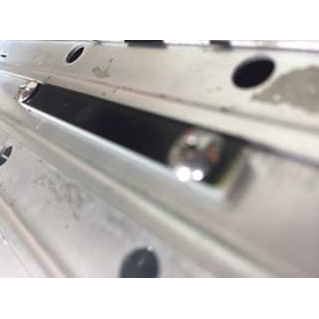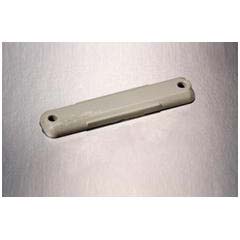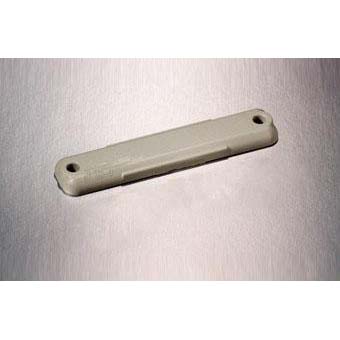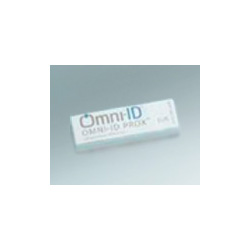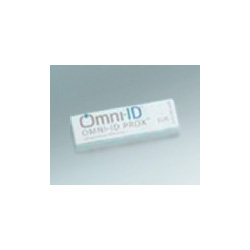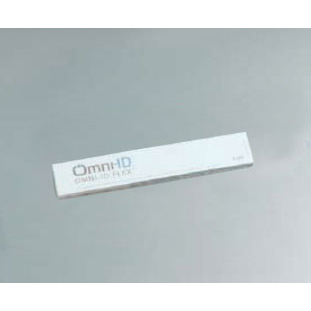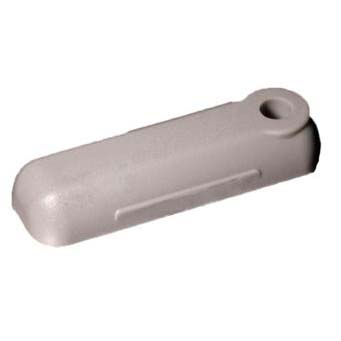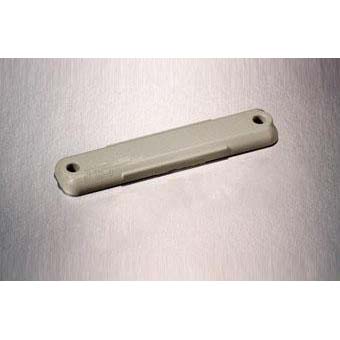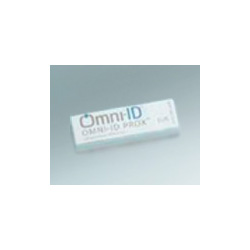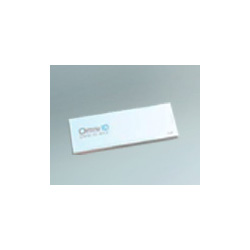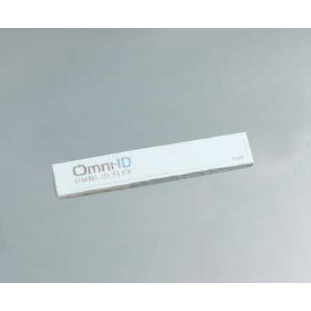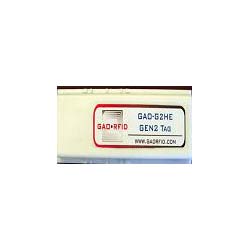RFID On-Metal Gen 2 EPC Tags
- Anemometers
- CATV Meters & Instruments
- CCTV & Video Equipment
- Drones
- Electrical Testers
- Electronics
- Display Screens
- EEPROM Chips and Accessories
- Industrial Tablet PCs
- Handheld Industrial Tablets & PCs
- High Precision Industrial Tablets & PCs
- Industrial Tablets & PCs with Android OS
- Industrial Tablets & PCs with Barcode Scanners
- Industrial Tablets & PCs with Multi-Function
- Outdoor Industrial Tablets & PCs
- Rugged Industrial Tablets & PCs
- Wireless Industrial Tablets & PCs
- LED or LCD Displays
- MicroSD Cards and Readers
- PDA/EDA
- Power Adapters and Converters
- Touchscreen Peripherals
- Environmental Test Instruments
- Anemometers
- Anemometers with Air Speed & Humidity Measurement
- Anemometers with Air Volume Measurement
- Anemometers with Temperature & Humidity Measurement
- Anemometers with Wind Chill Measurement
- Benchtop Anemometers
- Cup Anemometers
- Dust & Waterproof Anemometers
- Handheld Anemometers
- High-Precision Anemometers
- Hot-Wire Anemometers
- Industrial Anemometers
- Pressure Anemometers
- Rugged Wind Gauges
- Thermal Anemometers
- Ultrasonic Anemometers
- Weather Monitoring Anemometers
- Wind Speed & Direction Gauges
- Wind Vane Anemometers
- Colorimeters
- Benchtop Colorimeters
- Bluetooth Color Analyzer
- Clinical & Diagnostic Colorimeters
- Colorimeters for Food & Beverage
- Colorimeters for Textiles
- Colorimeters with CIE L*a*b* Measurement
- Digital Color Meters
- Dust & Waterproof Colorimeters
- Handheld Colorimeters
- Industrial Colorimeters
- Lab-Grade Colorimeters
- Rugged Colorimeters
- Wireless Colorimeters
- Gas Analyzers
- Gas Detectors
- Ammonia Gas Detectors
- Carbon Dioxide Gas Detectors
- Alarm Integrated Carbon Dioxide Gas Detectors
- Carbon Dioxide Gas Detectors with Data Logging
- Electrochemical Carbon Dioxide (CO2) Detectors
- Handheld Carbon Dioxide Gas Detectors
- High Precision Carbon Dioxide Gas Detectors
- Industrial Carbon Dioxide (CO2) Gas Detectors
- Non-Dispersive Infrared (NDIR) CO2 Detectors
- Outdoor Carbon Dioxide Gas Detectors
- Rugged Carbon Dioxide Gas Detectors
- Carbon Monoxide Gas Detector
- Combustible Gas Detectors
- Formaldehyde Gas Detectors
- Alarm-Integrated Formaldehyde Gas Detectors
- Data Logging Formaldehyde Gas Detectors
- Electrochemical Formaldehyde Gas Detectors
- Formaldehyde Gas Detectors with Calibration
- Handheld Formaldehyde Gas Detectors
- Industrial Formaldehyde Gas Detectors
- Laboratory Formaldehyde Gas Detectors
- Outdoor Formaldehyde Gas Detectors
- Wireless Formaldehyde Gas Detectors
- Hydrogen Bromide Gas Detectors
- Alarm-Enabled Hydrogen Bromide Gas Detectors
- Data Logging Hydrogen Bromide Gas Detectors
- Explosion-Proof Hydrogen Bromide Gas Detectors
- Handheld Hydrogen Bromide Gas Detectors
- High Precision Hydrogen Bromide Gas Detectors
- Outdoor Hydrogen Bromide Gas Detectors
- Wireless Hydrogen Bromide Gas Detectors
- Hydrogen Chloride Gas Detectors
- Alarm-Enabled Hydrogen Chloride Gas Detectors
- Handheld Hydrogen Chloride Gas Detectors
- High Precision Hydrogen Chloride Gas Detectors
- Hydrogen Chloride Gas Detectors with Data Logging
- Outdoor Hydrogen Chloride Gas Detectors
- Rugged Hydrogen Chloride Gas Detectors
- Wireless Hydrogen Chloride Gas Detectors
- Hydrogen Cyanide Gas Detectors
- Hydrogen Fluoride Gas Detector
- Hydrogen Gas Detectors
- Catalytic Hydrogen Gas Detectors
- Electrochemical Hydrogen Gas Detectors
- Explosion-Proof Hydrogen Gas Detectors
- Handheld Hydrogen Gas Detectors
- High Precision Hydrogen Gas Detectors
- Hydrogen Gas Detectors with Alarm
- Hydrogen Gas Detectors with Colour LCD Display
- Hydrogen Gas Detectors with Data Logging
- Hydrogen Gas Detectors with USB Connectivity
- Industrial Hydrogen Gas Detectors
- Infrared Hydrogen Gas Detectors
- Outdoor Hydrogen Gas Detectors
- Photoionization Hydrogen Gas Detectors
- Hydrogen Sulfide Gas Detectors
- Benchtop Hydrogen Sulfide Gas Detectors
- Handheld Hydrogen Sulfide Gas Detectors
- High Precision Hydrogen Sulfide Gas Detectors
- Hydrogen Sulfide Gas Detectors with Alarm
- Hydrogen Sulfide Gas Detectors with Data Logging
- Outdoor Hydrogen Sulfide Gas Detectors
- Rugged Hydrogen Sulfide Gas Detectors
- Wide Range Hydrogen Sulfide Gas Detectors
- Wireless Hydrogen Sulfide Gas Detectors
- Methane Gas Detectors
- Alarm-Enabled Methane Gas Detectors
- Benchtop Methane Gas Detectors
- Catalytic Combustion Methane Gas Detectors
- Electrochemical Methane Gas Detectors
- Explosion-Proof Methane Gas Detectors
- Handheld Methane Gas Detectors
- High Precision Methane Gas Detectors
- Industrial Methane Gas Detectors
- Infrared Methane Gas Detectors
- Laser Based Methane Gas Detectors
- Methane Gas Detectors with Data Logging
- Outdoor Methane Gas Detectors
- Rugged Methane Gas Detectors
- Wireless Methane Gas Detectors
- Multi Gas Detectors
- 4-in-1 Multi Gas Detectors
- Alarm-Integrated Multi Gas Detectors
- Auto Calibrated Multi Gas Detectors
- Benchtop Multi Gas Detectors
- Data Logging Multi Gas Detectors
- Handheld Multi Gas Detectors
- High Precision Multi Gas Detectors
- Industrial Multi Gas Detectors
- Outdoor Multi Gas Detectors
- Rugged Multi Gas Detectors
- Wireless Multi Gas Detectors
- Nitric Oxide Gas Detectors
- Nitrogen Dioxide Gas Detectors
- Alarm-Enabled Nitrogen Dioxide Gas Detectors
- Benchtop Nitrogen Dioxide Gas Detectors
- Chemical Sensor Based Nitrogen Dioxide Gas Detectors
- Data Logging Nitrogen Dioxide Gas Detectors
- Explosion-Proof Nitrogen Dioxide Gas Detectors
- Handheld Nitrogen Dioxide Gas Detectors
- High Precision Nitrogen Dioxide Gas Detectors
- Laser Based Nitrogen Dioxide Gas Detectors
- Outdoor Nitrogen Dioxide Gas Detectors
- Rugged Nitrogen Dioxide Gas Detectors
- Wireless Nitrogen Dioxide Gas Detectors
- Other Gas Detectors
- Oxygen Gas Detectors
- Ozone Gas Detectors
- Alarm-Enabled Ozone Gas Detectors
- Benchtop Ozone Gas Detectors
- Electrochemical Ozone Gas Detectors
- Handheld Ozone Gas Detectors
- High Precision Ozone Gas Detectors
- Outdoor Ozone Gas Detectors
- Ozone Gas Detectors with Data Logging
- Ozone Gas Detectors with Multi Gas Detection
- Rugged Ozone Gas Detectors
- Wide-Range Ozone Gas Detectors
- Wireless Ozone Gas Detectors
- Hygrometers
- Infrared Thermometers & Cameras
- Automotive Infrared Thermometers
- Data Processing Infrared Thermometers
- Fire Rescue Infrared Thermometers
- Handheld Infrared Thermometers
- Heavy Duty Infrared Thermometers
- High Accuracy Infrared Thermometers
- High Performance Infrared Thermometers
- High Precision Infrared Thermometers
- Industrial Infrared Thermometers
- Infrared Thermometers with Alarm
- Infrared Thermometers with Auto Power Off
- Infrared Thermometers with AVG Record
- Infrared Thermometers with Emissivity
- Infrared Thermometers with Laser Aiming
- Medical Infrared Thermometers
- Non-Contact Infrared Thermometers
- Outdoor Infrared Thermometers
- Rugged Infrared Thermometers
- Surface Temperature Infrared Thermometers
- Wireless Infrared Thermometers
- Moisture Analyzers & Meters
- Benchtop Moisture Analyzers
- Concrete Moisture Meters
- Draft Shield Moisture Analyzers
- Handheld Moisture Meters
- High Precision Moisture Analyzers
- High Speed Moisture Analyzers
- Industrial Moisture Analyzers
- Manual-Off Moisture Analyzers
- Moisture Analyzers with Data Logging
- Moisture Meters with a Lithium Battery
- Outdoor Moisture Analyzers
- Paper Moisture Analyzers
- Pollution Moisture Meters
- Rugged Moisture Analyzers
- Wired Moisture Analyzers
- Wood Moisture Meters
- Other Environmental Testers
- Radiation Meters
- Alpha – Beta – Gamma Radiation Meters
- Benchtop Radiation Meters
- Electromagnetic Radiation Meters
- Geiger-Muller (GM) Radiation Meters
- Handheld Radiation Meters
- High Performance Radiation Meters
- Indoor Radiation Meters
- Outdoor Radiation Meters
- Radiation Meters with Data Logging
- Ultraviolet Radiation Meters
- Wireless Radiation Meters
- Refractometers
- Alarm Enabled Refractometers
- Auto Refractometers
- Auto Shut-Off Refractometers
- Benchtop Refractometers
- Handheld Refractometers
- High Precision Laboratory Refractometers
- Industrial Refractometers
- Outdoor Refractometers
- Rugged Refractometers
- Sugar Refractometers
- Wide Measurement Range Refractometers
- Wine Refractometers
- Sound Level Meters & Calibrators
- Temperature & Process Calibrators
- Auto Power-Off Temperature & Process Calibrators
- Benchtop Temperature & Process Calibrators
- Customizable Temperature & Process Calibrators
- Data Logging Temperature & Process Calibrators
- DC Voltage Temperature & Process Calibrators
- Handheld Temperature & Process Calibrators
- High Precision Temperature & Process Calibrators
- Multifunctional Temperature & Process Calibrators
- Rugged Temperature & Process Calibrators
- Temperature & Process Signal Calibrators
- Thermocouple Temperature & Process Calibrators
- Wireless Temperature & Process Calibrators
- Temperature Data Loggers
- Alarm-Enabled Temperature Data Loggers
- Benchtop Temperature Data Loggers
- Handheld Temperature Data Loggers
- Industrial Temperature Data Loggers
- Multi-Channel Temperature Data Loggers
- Outdoor Temperature Data Loggers
- Temperature and Humidity Data Loggers
- Temperature Data Loggers with Probe
- Thermistor Temperature Data Loggers
- Thermocouple Temperature Data Loggers
- USB Temperature Data Loggers
- Wireless Temperature Data Loggers
- Turbidimeters
- Color Interference Turbidimeters
- Colored Sample Turbidimeters
- Colored Water Turbidimeters
- Drinking Water Turbidimeters
- Formazin Standard Turbidimeters
- Handheld Turbidimeters
- High Precision Turbidimeters
- High Range Turbidimeters
- High-Level Turbidimeters
- Industrial Turbidimeters
- Laboratory & Research Turbidimeters
- Low Turbidity Range Turbidimeters
- Moderate Range Turbidimeters
- Multi-Parameter Turbidimeters
- Nephelometric Turbidimeters
- Ratio Turbidimeters
- Rugged Turbidimeters
- Turbidimeters with Field Kits
- Turbidimeters with NTU
- Anemometers
- Fiber Products
- Advanced Fiber Testers
- Cat Cables & Accessories
- Enterprise Network
- Fiber Fusion Splicers
- Fiber Optic Cabling & Splicers
- Fiber Testers
- Racks & Enclosures
- Systems & Solutions
- Transceivers
- WDM & Optical Accessories
- IoT
- BLE & Bluetooth Mesh
- Cellular (3G, 4G, 5G) for IoT (Internet of Things)
- Edge Computing for IoTs
- Encryption and Authentication Modules
- GPS for IoT (Internet of Things)
- Healthcare IoT Devices
- IIoT Technologies
- IoT Development Kit
- IoT Platform
- IoT Sensors
- Lidar
- LoRaWAN & LPWAN (Low Power Wide Area Networks)
- NFC (Near Field Communications) & HF (High Frequency) RFID
- Wi-Fi and Wi-Fi HaLow
- Z-Wave
- Zigbee
- Life Sciences
- NTB
- PSTN Products
- RFID
- Structural Testers
- Coating & Material Thickness Gauges
- Aircraft Coating and Material Thickness Gauges
- Automotive Coating and Material Thickness Gauges
- Coating and Material Thickness Gauges with Auto Power-off Function
- Coating and Material Thickness Gauges with Two Point Calibration
- Data Logging Coating and Material Thickness Gauges
- Handheld Coating and Material Thickness Gauges
- High Precision Coating and Material Thickness Gauges
- Multiple Mode Coating and Material Thickness Gauges
- Non-Destructive Coating and Material Thickness Gauges
- Non-Magnetic Coating and Material Thickness Gauges
- Rugged Coating and Material Thickness Gauges
- Ultrasonic Coating and Material Thickness Gauges
- Wide Measurement Range Coating and Material Thickness Gauges
- Wired Coating and Material Thickness Gauges
- Wireless Coating and Material Thickness Gauges
- Crack Detectors
- Concrete Crack Depth and Width Detector
- Concrete Crack Detectors
- Crack Detectors with Data Logging
- Handheld Crack Detectors
- High Accuracy Crack Detectors
- Industrial Crack Detectors
- Non-Destructive Testing Crack Detectors
- Outdoor Crack Detectors
- Rugged Crack Detectors
- Ultrasonic Crack Detectors
- Wireless Crack Detectors
- Flaw Detectors
- Gloss Meters
- Hardness Testers
- Hardness Testers with Alarm
- Hardness Testers with Auto Recognition of Impact Device
- Hardness Testers with Data Storage
- Hardness Testers with Installable Software
- Hardness Testers with Multi-Angle Testing
- Hardness Testers with Preset Limit Settings
- Hardness Testers with Thermal Printer
- Hardness Testers with User Material Function
- Pen Type Hardness Testers
- Laser Distance Meters
- Manometers
- Other Material Analyzers
- Surface Roughness Gauges & Testers
- Thermal Imagers & Industrial Endoscopes
- Handheld Thermal Imagers and Industrial Endoscopes
- High-Resolution Thermal Imagers and Industrial Endoscopes
- Multi-Application Thermal Imagers and Industrial Endoscopes
- Outdoor Thermal Imagers and Industrial Endoscopes
- Rugged Thermal Imagers and Industrial Endoscopes
- Wireless Thermal Imagers and Industrial Endoscopes
- Thickness Gauges
- Automatic Calibration Thickness Gauges
- Eddy Current Thickness Gauges
- Handheld Thickness Gauges
- High-Precision Thickness Gauges
- Industrial Thickness Gauges
- Integrated Probe Thickness Gauges
- Magnetic Thickness Gauges
- Metal Structural Thickness Gauges
- Multi-Point Calibration Thickness Gauges
- Non-Metal Structural Thickness Gauges
- Paint Structural Thickness Gauges
- Rugged Thickness Gauges
- Thickness Gauges with Data Logging
- Thickness Gauges with Field Kits
- Ultrasonic & Mass Flow Meters
- Vibration Meters
- Coating & Material Thickness Gauges
- Temperature & Process Calibrators
- Uncategorized
- Water Testers
- Conductivity Testers & Meters
- Benchtop Conductivity Meters
- Calibrated Conductivity Meters
- Conductivity Meters with Salinity Measurement
- Conductivity Meters with Temperature Measurement
- Conductivity Testers with Resistivity Measurement
- Conductivity Testers with TDS Measurement
- Handheld Conductivity Meters
- High-Accuracy Conductivity Meters
- High-Purity Water Conductivity Meters
- Laboratory Conductivity Meters
- ION Meters
- Ammonium Ion Meters
- Benchtop Ion Meters
- Calcium Ion Meters
- Chloride Ion Meters
- Handheld Ion Meters
- Ion Meters with Auto-Hold Function
- Ion Meters with Backlit LCD Display
- Ion Meters with Multi-Mode
- Ion Meters with Multi-Point Calibration
- Laboratory & Research Ion Meters
- Multi-Ion Measurement Ion Meters
- Multi-Parameter Ion Meters
- Nitrate Ion Meters
- Outdoor Ion Meters
- Potassium Ion Meters
- Sodium Ion Meters
- Water Quality Ion Meters
- Wireless Ion Meters
- pH Meters
- Automatic Calibration pH Meters
- Benchtop pH Meters
- Food & Beverage pH Meters
- Handheld pH Meters
- Industrial pH Meters
- Laboratory pH Meters
- Multi-Point Calibration pH Meters
- Outdoor pH Meters
- pH Meters with ORP Units (mV)
- pH Meters with Three Point Calibration
- pH Meters with Two-Point Calibration
- Rugged pH Meters
- Water Quality pH Meters
- Water Meters
- Conductivity Testers & Meters
RFID tags advance the future of technology. RFID tags can be placed on almost anything. Tags use electromagnetic fields to identify and track the desired object. Active tags are battery-powered and will operate hundreds of meters away from the RFID reader. Ever since their inception, the use of RFID tags continue to expand – they became especially popular for toll readers and assembly lines to track the product’s progress throughout the process.
Usually, RFID tags have 3 different power modes, which can either be passive, active or battery assisted passive. RFID tags contain at least two parts that help the tag operate as needed. They contain an integrated circuit to assist with the collection and storing of data. Equipped with a RF (radio frequency) signal, our RFID tag operates with power. Additionally, it has an antenna to help receive and transmit signals. Unlike common barcodes, RFID tags allow the user to easily read the information, even if the tag is concealed or covered. As a result, RFID tags are the most attractive option to track objects. RFID tags have evolved over the years, going from simple toll route readers to being found in key cards to access a hotel room. The technology behind the RFID technology continues to improve as technology advances.
Showing all 17 results

